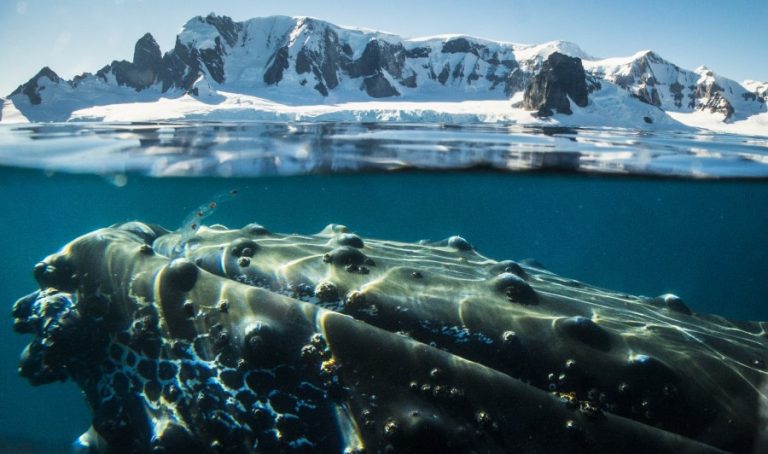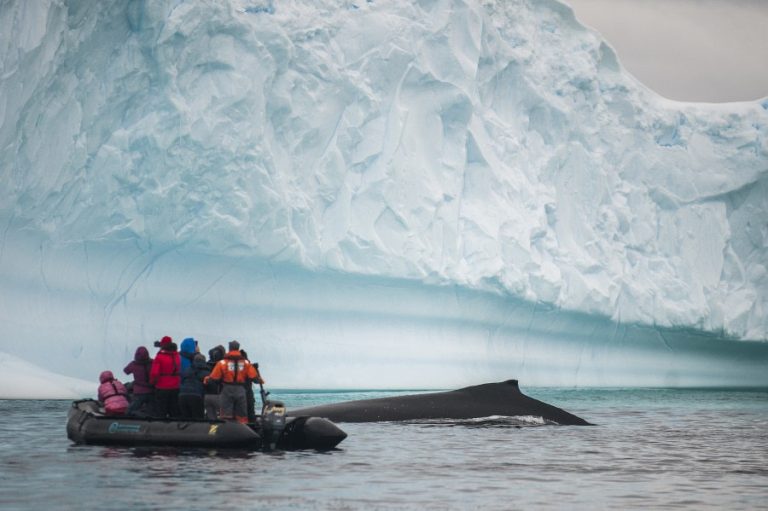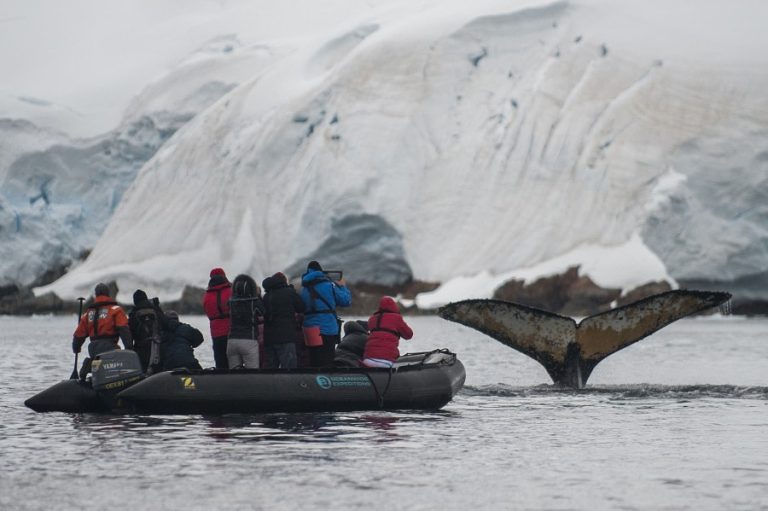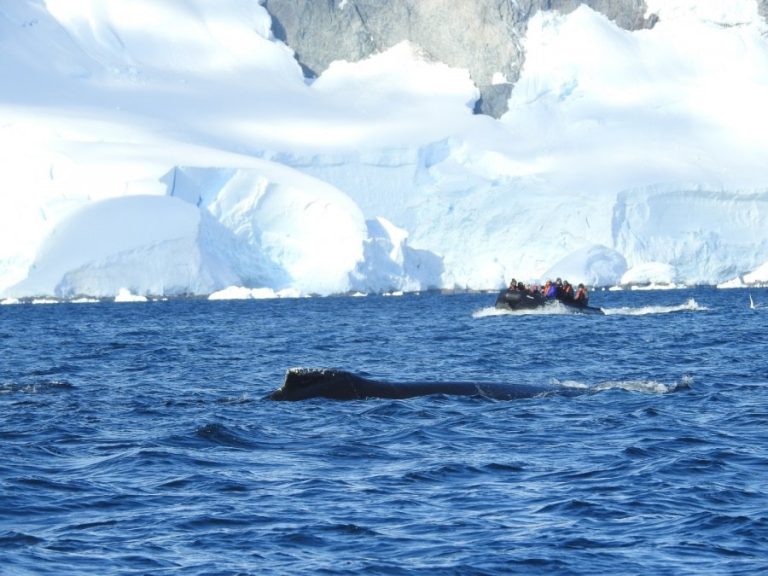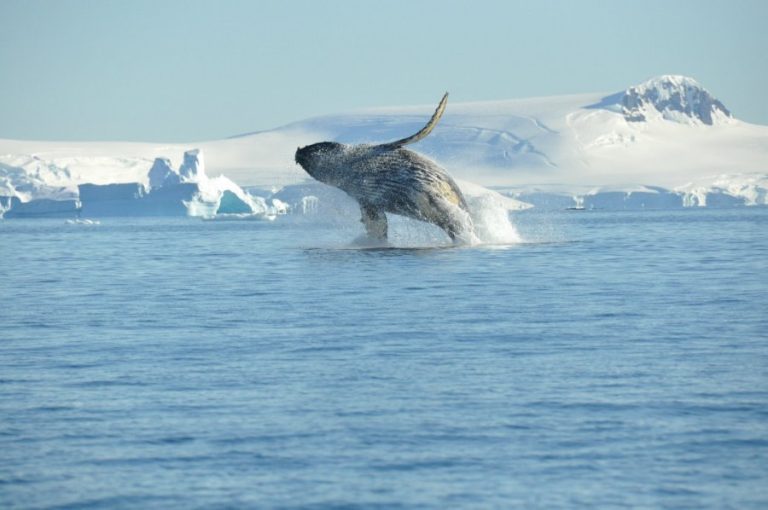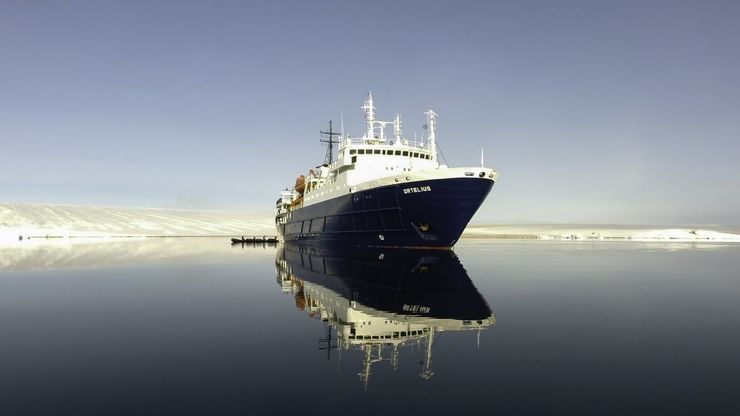Oceanwide: The guide to Antarctic whale watching
The nutrient-rich waters of Antarctica are one of the best places on Earth for whale watching. Close encounters of the finned kind are frequent throughout the Antarctic expedition cruise season.
February and March are the best periods for whale encounters, with this late part of the season being among the most spectacular, as the icy oceans play host to huge numbers of migrating whales.
What species of whale can you see in Antarctica?
Several species are most frequently spotted in Antarctica, especially around the Antarctic Peninsula’s straits, islands, and bays. You will most likely spot humpback, fin, minke whales, and orcas. Other species, such as blue whales, sei whales, sperm whales, and southern right whales, are less frequently spotted, with sperm whale sightings being particularly prized for their rarity.
Humpback whale, Antarctica_ Dietmar Denger – Oceanwide Expeditions
Humpback whales
One of the most visually distinct whale species, humpback whales are wildlife photographers’ dream, thanks to their frequent and impressive surface displays, which include tail fluking and breaching. With huge flippers and a distinctive humped back, this whale species is easy to spot and, once encountered, is never forgotten. Humpback whales can reach up to 19 meters long and weigh upwards of 35 tons.
Fin whales
These giants are the second largest whale species, reaching upwards of 25 meters in length. Like the humpback, minke, and blue whales, fin whales are baleen whales that feed on the vast numbers of krill that make the southern oceans such a vital feeding ground for many whale species. Being larger whales, they are more commonly found in the open ocean, so you can often encounter them while crossing from sub-Antarctic islands, such as South Georgia, Elephant Island, or the South Shetland Islands, to the Antarctic Peninsula.
Humpback whale, Zodiac cruising, Antarctica_ Morten Skovgaard-Oceanwide Expeditions (1)
Minke whales
Perhaps the most abundant whale species in Antarctica, the minke whale is a frequent visitor to pack ice, often accompanied by calves as they feed on krill. The second smallest baleen whale species, the minke whale, reaches sizes of up to around 10 meters and is a graceful breacher, their small dorsal fin instantly recognizable.
Killers whales (orca)
An icon of the ocean, the orca is instantly recognizable thanks to its distinctive dorsal fin and fascinating group behavior. The killer whale is technically a species of dolphin. Growing to around 18 meters, the killer whale is a fearsome predator, preying on seals, fish, and other whale species. Highly social, killer whales have complex hunting and group behaviors and are among the most intelligent marine species on the planet.
The best time of year to spot whales in Antarctica
The Antarctic expedition cruise season runs between October and March, and throughout, whale encounters can be expected, both during the crossing of the Drake Passage, while visiting sub-Antarctic islands, voyaging south through the southern oceans, and when exploring the icy world of the Antarctic Peninsula. However, towards the end of the season, whale numbers grow as migrating groups and individuals reach the krill-reach waters, and the first signs of the approaching winter begin to appear.
On an Antarctic expedition cruise during February and March, sea ice will be at its lowest, allowing the small-size expedition vessels that Oceanwide Expeditions champions to venture further south, into the polar circle, and into smaller channels and inlets that otherwise remain inaccessible to larger ships. Many of these areas, such as the Lemaire Channel and the Gerlache Strait, are particularly known for whale encounters, making trips during February and March ideal for photographers and wildlife enthusiasts alike.
Humpback whale, Zodiac cruising, Antarctica_ Morten Skovgaard Photography-Oceanwide Expeditions (1)
Humpback whale watching_ Linda Forey-Oceanwide Expeditions
Whale spotting with Oceanwide Expeditions
Oceanwide Expeditions is a pioneer of polar expedition cruises and follows an ethos of getting guests closer to the heart of nature and giving them a 360° view and experience of both Antarctica and the Arctic. Both from Oceanwide Expeditions’ ships and aboard Zodiacs, you’ll find yourself closer to these giants of the seas than you ever thought possible.
In Oceanwide Expeditions’ 25-26 Antarctica season, several trips are specifically designed to maximize whale encounters. Consider joining an Antarctica – Beyond the Polar Circle – Whale Watching trip or an Antarctica – Whale Watching Discovery and Learning Voyage, both departing in March 2026 for the Antarctic Peninsula. An Antarctica – Elephant Island – Weddell Sea – Polar Circle trip takes you to remote Elephant Island and the open seas, making the chances of spotting larger, -deep-sea swelling species bigger. In contrast, for those seeking a truly encompassing adventure, the 27-night Remote Weddell Sea Explorer trip takes you deep into the beautiful Weddell Sea and some of Antarctica’s most iconic and remote locations.
What other wildlife can I see in Antarctica?
In addition to whales, on an Oceanwide Expeditions trip, you’ll encounter a variety of other wildlife species. The most iconic, the penguin, can be found across the sub-Antarctic and Antarctica, with several different species, including chinstrap, king, Adelie, gentoo, and emperor penguins, to be seen on various trip itineraries.
You’ll also encounter seals, such as elephant seals and Weddell seals, and a massive variety of bird life. Many islands and shorelines in Antarctica are important nesting sites for seabird species, making shore landings and Zodiac cruises a vibrant and raucous experience.
Humpback whale, breaching, Antarctica_ Nicolo de Cata-Oceanwide Expeditions
Whale encounters in the Arctic with Oceanwide Expeditions
On an Oceanwide Expeditions trip to the Arctic, you’ll also have fantastic opportunities to spot whales among the ice floes of Svalbard or the shores of Greenland and Iceland. Several species can only be found in the Arctic, such as the impressive and elusive bowhead whale and the inquisitive beluga. Oceanwide Expeditions’ Arctic season runs between May and October, with a variety of itineraries that get you closer to some of the most iconic wildlife species in the world, including polar bears, walruses, seals, and whales.
Visit the Oceanwide Expeditions website to discover their full Arctic 2025 program or to book your place for their upcoming 25-26 Antarctic program.
Don’t miss updates, news and reviews about Oceanwide Expeditions on Cruising Journal.

